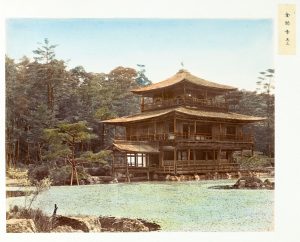 Une publication en ligne liée à un colloque du CIHA http://www.ciha.org/content/toward-future-museums-and-art-history-east-asia-e-book
Une publication en ligne liée à un colloque du CIHA http://www.ciha.org/content/toward-future-museums-and-art-history-east-asia-e-book
Toward the Future: Museums and Art History in East Asia. Edited by Hiroyuki Suzuki and Akira Akiyama
 Memory and Visual Culture in 20th and 21st Century East Asia Transposed Memory: Visual Sites of National Recollection in Twentieth and Twenty-first Century East Asia Edited by Alison J. Miller and Eunyoung Park
Memory and Visual Culture in 20th and 21st Century East Asia Transposed Memory: Visual Sites of National Recollection in Twentieth and Twenty-first Century East Asia Edited by Alison J. Miller and Eunyoung Park
Deadline: Jun 1, 2021
We are seeking chapter proposals for an edited volume titled « Transposed Memory: Visual Sites of National Recollection in Twentieth and Twenty-first Century East Asia, » originating from a 2021 College Art Association annual conference session of the same name.
In twentieth and twenty-first century East Asia the establishment of modern nations and the shared experiences of wars, political conflicts, the colonial period, and Cold War tensions, . . . → En lire plus
 L’objet du colloque sera d’étudier le phénomène des collections privées ou publiques d’art extrême-oriental dans le monde contemporain, en particulier le rapport des collectionneurs aux artistes et au marché de l’art. Les pays privilégiés, du fait de la complexité des interactions qu’ils développent dans la formation des collections artistiques sont, outre ceux de l’Union Européenne, la Chine, Taiwan, le Japon, la Corée, le Vietnam et l’Indonésie. Si notre ambition est d’accorder une large place à l’art contemporain, les collections envisagées pourront également rassembler des objets plus anciens, et pas seulement des objets d’art. Le terme « Extrême-Orient » sera ici compris dans un sens large, incluant les îles de . . . → En lire plus
L’objet du colloque sera d’étudier le phénomène des collections privées ou publiques d’art extrême-oriental dans le monde contemporain, en particulier le rapport des collectionneurs aux artistes et au marché de l’art. Les pays privilégiés, du fait de la complexité des interactions qu’ils développent dans la formation des collections artistiques sont, outre ceux de l’Union Européenne, la Chine, Taiwan, le Japon, la Corée, le Vietnam et l’Indonésie. Si notre ambition est d’accorder une large place à l’art contemporain, les collections envisagées pourront également rassembler des objets plus anciens, et pas seulement des objets d’art. Le terme « Extrême-Orient » sera ici compris dans un sens large, incluant les îles de . . . → En lire plus
